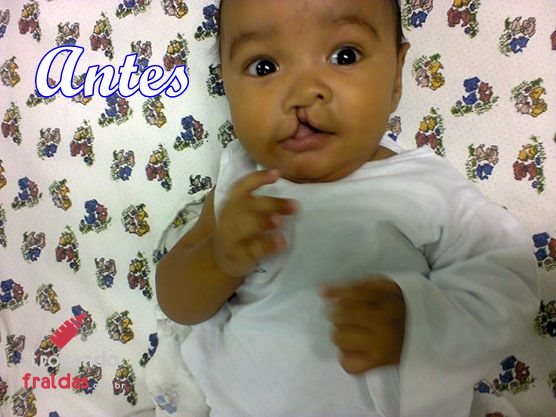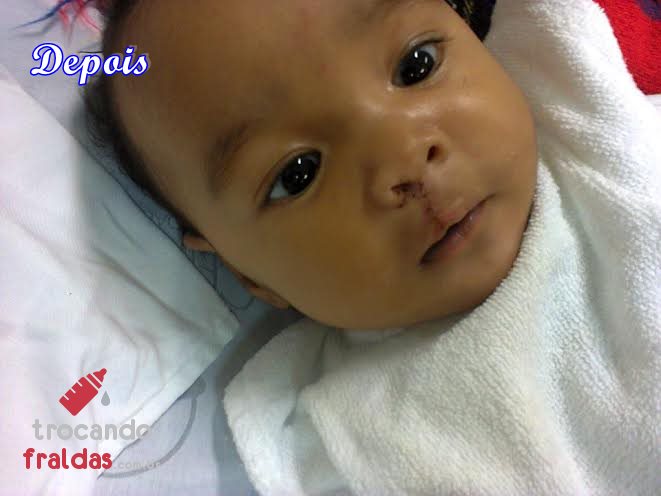The palate, labial cleft, or also known as cleft lip can appear even in the womb, but do you know why cleft lip happens? It’s amazing how wise nature is—two tiny cells give rise to a baby in just a few weeks, and more precisely, close to the 40th week, a baby full of vitality is born. Even though this development is minimally perfect, sometimes errors and malformations can occur, including the incomplete closure of the lip resulting in cleft lip1.
Around the 16th week, there is a closure, a joining of both sides of the face, and where there was previously a developmental dividing gap (right and left sides of the face), the groove beneath the nose forms. If this groove does not close completely, the cleft lip shows up either on an ultrasound or at birth. Cleft lip is simply the failure of both sides of the face to merge vertically—in the roof of the mouth and even the palate, or on both sides, right and left, in some rare cases. A case of cleft lip may occur in 1 out of 1000 children, so it is a quite common condition.
The causes of cleft lip are not certain, but some factors during development are known to be involved, and measures such as the use of folic acid2 can help prevent this “malformation”; however, it is still not clear exactly why the joining of the face does not occur, resulting in cleft lip during fetal development. One hypothesis for the causes of cleft lip is genetics—that is, if a family member carries the gene for cleft lip, it can occur in the fetus, but this remains a hypothesis.
How to Diagnose and Treat Cleft Lip?
Diagnosis of cleft lip can be made even before birth through routine ultrasounds such as the morphological one, although it is usually definitively detected after birth. The good news is that cleft lip has a very simple, easy, and effective treatment. Most of the time, treatment for cleft lip is just plastic surgery.
The care for a baby with cleft lip is nearly the same as for a baby without this type of cleft. If the split in the lip is only on the outside, there will be no major problems; however, the doctor and the baby’s parents should be alert if the cleft is also in the roof of the mouth or palate. Teeth may have problems as they grow, and in rare cases, the child can develop speech issues if the cleft is severe or goes untreated in infancy. Treatment for cleft lip can take place even before the first month of life. It is up to the doctor to decide when to begin procedures to reverse the condition and also to assess the severity of the case. Do you know what it’s like to be the mother of a beautiful boy who was born with a cleft lip? Reader Helymara shares a little about her experience with her lovely, healthy, vibrant baby named Dominic Leonardo. Follow along.
Famivita: When did you find out your baby would have a cleft lip?
Helymara: I found out when my baby was born, but I could have known during the morphological ultrasound3
Famivita: What was your initial feeling? And later, how was it dealing with this “difference”?
Well, at the time, I felt guilty, I was afraid because I thought I had caused that to my baby’s mouth. But dealing with it was very easy because in the maternity hospital I had help from the psychologist and nurses, and at home, it was normal—my family wasn’t nearly as shaken as I was.
Famivita: Did you know about this “malformation”? Did you know that cleft lip existed?
Helymara: No, I never knew anything about it.
Famivita: How was the process leading up to the baby’s surgery?
Helymara: Well, as soon as he was born, right there in the maternity hospital, they referred us to Centro de Bauru. That’s where I learned what cleft lip was and got information about the surgery. And when my baby turned four months old, he had the surgery and it turned out perfect.
Famivita: Any advice for pregnant women who receive the news that their baby has a cleft lip…
Helymara: Well, don’t be frightened because this isn’t a battle without a victory, there is a cure and it turns out perfect. I have my baby who was born with a cleft lip and now he’s already had the surgery and he’s doing great—he eats, nurses, plays, he’s doing just fine.
Blogger’s Note: Cleft lip is not a serious condition, and the doctor will know how to guide you just as Helymara experienced. In fact, appearances don’t matter to mothers—their love is greater than any challenge that may arise. I think it’s super important for underserved populations to have support from plastic surgeons. In fact, there are several initiatives by groups of doctors who dedicate themselves once a year to perform cleft lip surgeries in more needy areas. Are you a plastic surgeon? Why not help create a more beautiful smile?
See also: What is Craniosynostosis and What Is the Treatment?
Photo: ReSurge International













